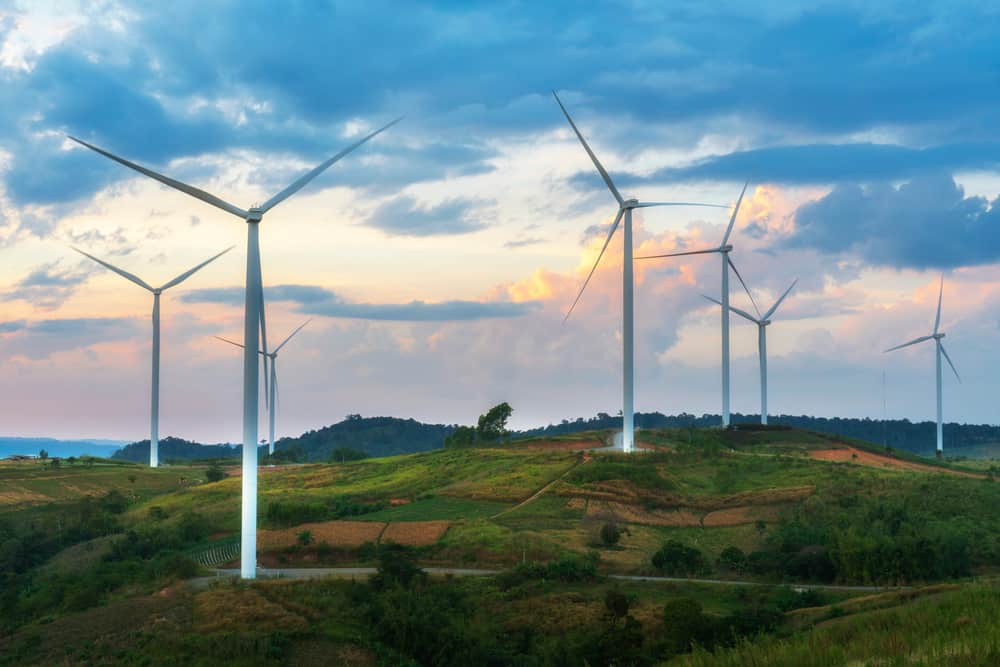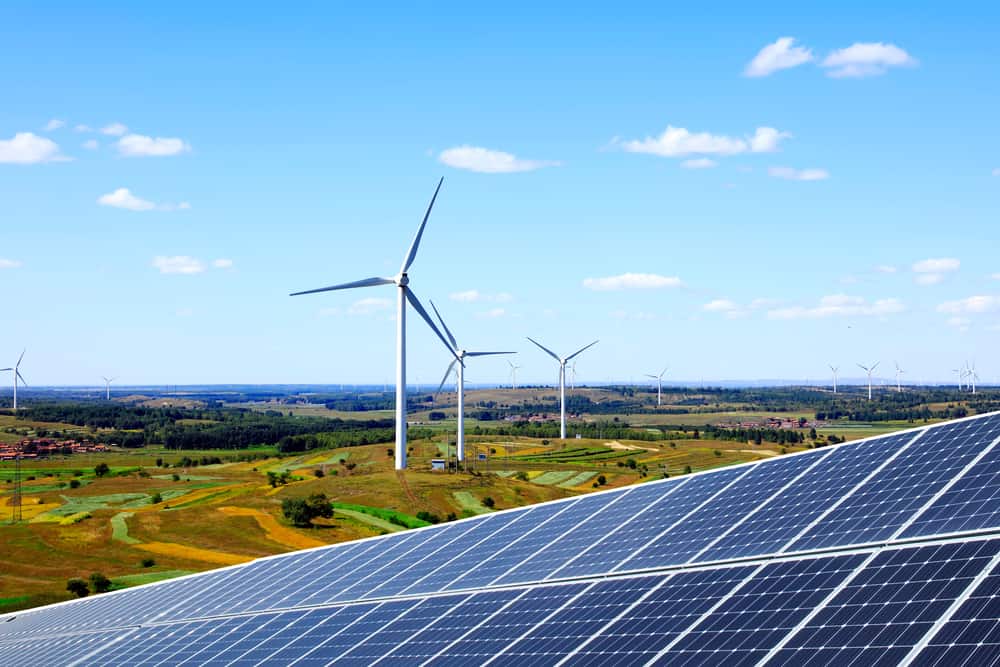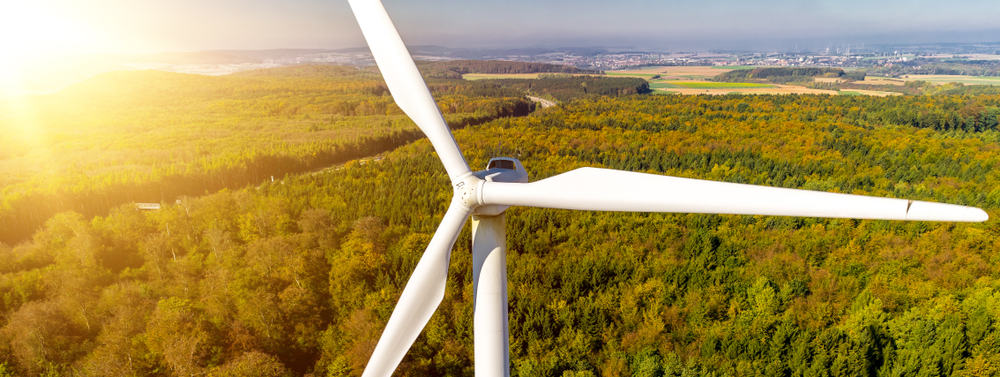Discover the Versatility of a 1.5 kW Wind Turbine: From Residential to Commercial
Harnessing the power of wind has always fascinated us, and as a forward-thinking company, we believe in embracing cutting-edge technology to achieve our goals. That's why we are excited about the remarkable advancements in wind turbines, particularly the highly versatile 1.5 kW model. This compact but powerful piece of equipment presents an exceptional opportunity for us to generate our own renewable energy and offset our electricity expenses.
With our commitment to sustainable business practices, we are constantly seeking innovative ways to reduce our carbon footprint and contribute to a greener future. By installing a 1.5 kW wind turbine, we can harness the power of the wind and convert it into clean, reliable electricity right at our premises. This not only helps us minimize our reliance on traditional power sources but also enables us to take control of our energy costs.
Understanding Wind Turbines and Their Power Ratings
Wind turbines play a vital role in generating clean and renewable energy from the natural power of the wind. Here's a closer look at wind turbines, their functions, and how their power is rated:
- What is a Wind Turbine?
- A wind turbine is a machine designed to harness the kinetic energy present in the wind and convert it into mechanical energy. This mechanical energy can be utilized directly for specific tasks, such as pumping water or grinding grains, in which case the machine is typically referred to as a windmill. Alternatively, the mechanical energy can be converted into electricity using a generator, making it a wind generator, wind turbine, wind power unit (WPU), or wind energy converter (WEC).
- How is a Wind Turbine Rated?
- The power rating of a wind turbine, measured in kilowatts (kW), indicates the maximum amount of power it can generate under ideal conditions. This rating provides an indication of the turbine's capacity and helps in determining its suitability for specific applications. However, it's important to note that actual power output may vary from the rated capacity due to various factors, such as wind speed, turbulence, and mechanical efficiency. In practice, the power output of a wind turbine is often lower than its rated capacity, as optimal conditions are rarely sustained for extended periods.

Why a 1.5 kW Wind Turbine?
A 1.5 kW wind turbine offers a range of advantages that make it a compelling option for various applications. Here's a closer look at the reasons why it's an excellent choice:
- Energy Efficiency:
- A 1.5 kW wind turbine is designed to generate a significant amount of energy, making it suitable for powering small households, cabins, or businesses. It can help reduce reliance on conventional energy sources and result in substantial cost savings on electricity bills.
- Versatility:
- Due to its what size wind turbine do i need and output capacity, a 1.5 kW wind turbine is versatile and can be utilized in various settings. It is suitable for both residential and commercial applications, providing energy solutions for a wide range of needs.
- Environmentally Friendly:
- Harnessing the power of the wind, a 1.5 kW wind turbine produces clean and renewable energy. By using wind energy, it significantly reduces carbon emissions and contributes to a greener, more sustainable future. Choosing this turbine helps promote environmental responsibility and reduce dependence on fossil fuels.
- Affordability:
- Compared to larger wind turbine models, a 1.5 kW wind turbine is more affordable. It offers an accessible entry point for individuals or organizations new to wind energy, allowing them to experience the benefits of renewable energy without substantial upfront costs. This affordability makes it an attractive option for those seeking a cost-effective solution for their energy needs.

The Potential Applications of a 1.5 kW Wind Turbine
A 1.5 kW wind turbine offers a range of potential applications across residential, commercial, and off-grid settings. Let's delve into these applications in detail:
- Residential Use:
- Residential wind turbines are gaining popularity as homeowners embrace renewable energy solutions. A 1.5 kW wind turbine is well-suited for residential use due to its manageable size and energy output. It can provide a substantial portion of a household's energy needs, powering various appliances, lighting, and other electrical devices. Homeowners can benefit from reduced energy costs and environmental sustainability while enjoying the advantages of wind energy.
- Commercial Use:
- Small businesses and commercial properties can harness the power of a 1.5 kW wind turbine to offset their energy consumption. This renewable energy source can contribute to the building's power supply, reducing reliance on the grid and lowering energy costs. Commercial establishments, especially those located in regions with high electricity prices, can achieve significant savings and demonstrate their commitment to sustainable practices.
- Off-Grid Applications:
- Off-grid locations, such as remote cabins, RVs, boats, and agricultural operations, can greatly benefit from a 1.5 kW wind turbine. When combined with a battery storage system, the turbine can provide a reliable, renewable power source in areas without access to the electric grid. It enables off-grid properties to enjoy the comforts of modern living, operate essential equipment, and maintain productivity while minimizing reliance on traditional energy sources.
Installation of a 1.5 kW Wind Turbine
The installation of a 1.5 kW wind turbine involves several essential steps to ensure its optimal performance and safety. Here's a detailed breakdown of the installation process:
- Site Evaluation:
- Assess the wind resource potential at your location. Factors to consider include average wind speed, wind direction, and any obstructions that may affect the turbine's performance. A professional wind site assessment can help determine if your site is suitable for a 240v wind turbine installation.
- Choosing the Right Turbine:
- Not all 1.5 kW wind turbines are the same. Research and select a turbine model that is well-suited for your specific needs and local wind conditions. Consider factors such as rotor diameter, tower height, and the turbine's power curve to ensure maximum energy capture and efficiency.
- Securing Permits:
- Check local regulations and obtain any necessary permits or approvals required for installing a wind turbine. This may include building permits, zoning approvals, and compliance with noise regulations. Ensure you comply with all relevant codes and regulations to ensure a smooth and legal installation process.
- Installation:
- It's crucial to have the wind turbine installation performed by experienced professionals who are knowledgeable in wind energy systems. They will handle tasks such as tower assembly, turbine mounting, electrical wiring, and connection to the grid or battery storage system. Professional installation ensures safety, adherence to manufacturer guidelines, and optimal performance of the wind turbine.
- Maintenance:
- Regular maintenance is vital to keep the 1.5 kW wind turbine operating at its best. This includes periodic inspection of components, lubrication, cleaning, and monitoring for any signs of damage or wear. Adhering to the manufacturer's recommended maintenance schedule and addressing any issues promptly will help maximize the turbine's lifespan and performance.
Exploring the Financial Benefits of a 15 kW Wind Turbine
Investing in a 15 kW wind turbine not only contributes to a sustainable future but also presents various financial advantages. Here's a detailed breakdown of how a off-grid wind turbine can help you save money and potentially earn additional income:
- Lower Energy Bills:
- By harnessing the power of wind to generate electricity, a 1.5 kW wind turbine can significantly reduce your reliance on traditional grid-supplied electricity. This leads to lower energy bills as you consume less electricity from the grid, resulting in immediate cost savings.
- Government Incentives:
- Many governments provide incentives, subsidies, and financial support to promote renewable energy adoption. These can include tax credits, rebates, grants, or favorable financing options. Taking advantage of these incentives can help offset the initial investment cost of a wind turbine and enhance the financial viability of the project.
- Net Metering and Feed-in Tariffs:
- In certain regions, net metering or feed-in tariff programs allow you to sell any excess electricity generated by your wind turbine back to the grid. This can result in additional income or credits on your electricity bill, further maximizing the financial benefits of your wind turbine investment.
- Long-Term Savings and Return on Investment:
- A 1.5 kW wind turbine is a long-term investment that offers ongoing financial benefits. While there is an upfront cost, the savings on energy bills, potential income from selling excess energy, and the longevity of the wind turbine can lead to significant long-term savings and a favorable return on investment over its operational lifespan.
- Energy Price Stability:
- Generating your own electricity through a wind turbine provides protection against fluctuating energy prices. As energy costs continue to rise, your wind turbine allows you to generate clean and affordable electricity, providing stability and insulation against future price increases.
Safety Considerations and Noise Impact of a 1.5 kW Wind Turbine
While the installation of a 1.5 kW wind turbine offers numerous benefits, it's crucial to address safety considerations and potential noise impacts to ensure a safe and harmonious environment. Here's a detailed exploration of these factors:
Safety Considerations:
- Proper Installation and Maintenance:
- To ensure safety, it's essential to have the 2.5kw wind turbine professionally installed by experienced technicians who adhere to industry standards and local regulations. Regular maintenance and inspections are also necessary to identify and address any potential issues promptly.
- Safe Distance and Location:
- Wind turbines should be installed at a safe distance from buildings, structures, and trees to prevent any accidents or damage in case of unforeseen events. Appropriate setback distances should be followed to ensure the safety of both the turbine and nearby structures.
- Lightning Protection:
- Wind turbines are equipped with lightning protection systems to safeguard against lightning strikes. These systems include lightning rods, grounding measures, and surge protection devices to divert and dissipate electrical surges caused by lightning strikes.
- Wind Speed Considerations:
- Wind turbines are designed to withstand specific wind speeds. It's crucial to consider the local wind conditions and ensure that the turbine is suitable for the site. The turbine's control system should have mechanisms to shut down or limit operation during high wind speeds to maintain safety.
Noise Impact:
- Low Noise Levels:
- Smaller wind turbines like the 1.5 kW model generally produce low noise levels. Properly designed and maintained turbines operate smoothly and quietly. Modern turbine designs and technologies focus on reducing noise emissions to minimize any potential impact.
- Correct Placement and Distance:
- The wind turbine should be correctly positioned and located to minimize potential noise impacts on nearby residential areas. Adequate setback distances and proper orientation can help mitigate noise concerns.
- Maintenance and Insulation:
- Regular maintenance, including proper lubrication and tightening of components, can prevent unnecessary noise caused by wear or loose parts. Insulating the turbine's mechanical components can further reduce noise transmission.
Conclusion
In conclusion, as a forward-thinking company, we are thrilled about the versatility and potential of a 1.5 kW wind turbine. By embracing this advanced technology, we can generate our own renewable energy, reduce our carbon footprint, and take control of our electricity expenses. The benefits of a 1.5 kW wind turbine extend beyond financial savings. We also contribute to a greener future by promoting environmental responsibility and reducing our dependence on fossil fuels.
Whether we utilize the wind turbine for residential or commercial purposes, its efficiency, adaptability, and affordability make it an excellent choice for our sustainability goals. It provides us with a reliable and clean power source, reduces our reliance on traditional grid-supplied electricity, and allows us to showcase our commitment to sustainable business practices.

